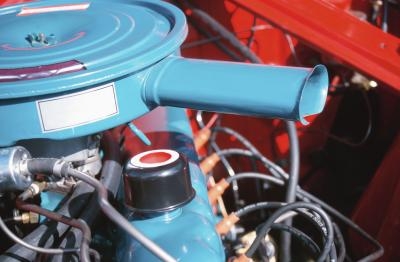
The Ford Pinto, unveiled for the 1971 model year, was initially available with two four-cylinder engines, one displacing 1,600 cc (1.6 liters), the other 2,000 cc (2.0 liters). Both were known as the Ford Pinto engine, although they appeared in other cars in the '70s and '80s. Both were designed around metric measurements. The 2,000-cc engine was manufactured in Ford's Cologne, Germany plant.
The 2,000-cc Pinto engine is a single-overhead-cam (SOHC) inline design with a cast-iron block, five main bearings and a two-barrel carburetor designed by Weber (built under license by Ford). It actually displaces 1,993 cc, with a bore diameter of 3.58 inches and stroke length of 3.03 inches. It was designed to use regular fuel, with a minimum recommended octane rating of 91.
For 1971, the engine produced 100 horsepower and 120 foot-pounds of torque with a compression ratio of 9.0-to-1. Later, the compression ratio was lowered to 8.6-to-1, resulting in a power decrease to 86 horsepower. While these are not very impressive power figures, the engine has been a popular unit for modifications which can increase output substantially.
The engine has two valves per cylinder, arranged in a crossflow cylinder head. Intake valves have a relatively large 1.65-inch diameter, while exhaust valves are 1.42 inches in diameter. Valve lifters are mechanically operated. A single exhaust leads combustion byproducts out of the engine.
Ford's codename for the 2,000-cc engine was T88. Aside from its use in the '71-'74 Pinto, it was also offered in the Capri and other European Fords such as the Cortina and Taunus. For 1973 it became the Pinto's base engine when the 1.6-liter unit was dropped.
The engine features a high-capacity, high-pressure oil pump. The cylinder firing order is 1-3-4-2. The recommended hot idle speed is 750 rpm with manual transmission, 650 with automatic.